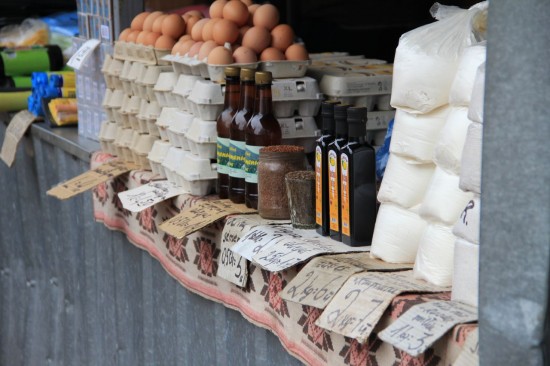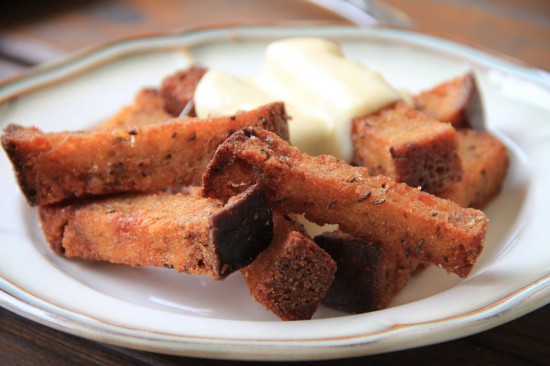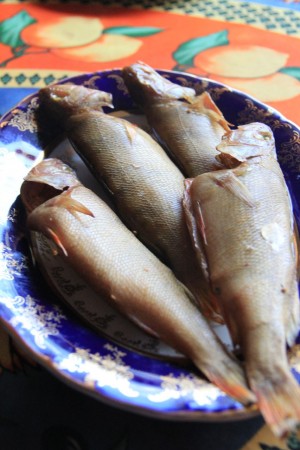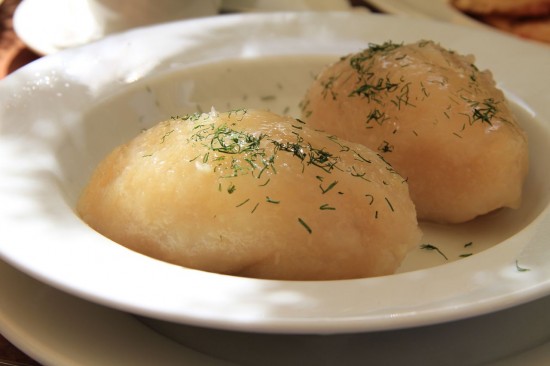Food is often the easiest gateway through which we navigate new territory and access cultures different from our own—eating is a language we all speak. We can learn a lot about a region and its people by what they cultivate, and ultimately, by what they put in their stomachs. So, when traveling, I find the best way to cut through the sensory overload a new environment presents is to search for what the locals eat, their rituals and traditions.

I’ve just arrived back at ICE after an inspiring week abroad, roaming the cities and the countryside of the tiny Baltic country of Lithuania. My great-grandfather emigrated from Lithuania to the US in 1900, and though generations of assimilation into the great melting pot have diluted many of the old-country traditions, it’s been important for me to learn more about my ancestral roots. Not only has closing this 110-year gap strengthened family bonds new and old, but it has also given the chef in me a new culinary perspective.
Lithuania has had a turbulent past. In the twentieth century alone, the country was ruled by Russian czars, torn apart by both the Nazis and Russians during World War II, and ultimately shrouded behind the Iron Curtain for fifty years, until it became the first former Soviet republic to declare independence upon the dissolution of the USSR in the early 1990s.
Today, Lithuania remains in a state of transition, and only since its independence have I been able to reconnect with three generations Laiskonis cousins. Amazingly, the culture and food traditions have survived these decades of repression. Baltic cuisines (including those of neighboring Latvia and Estonia) are still largely unknown due to cultural isolation, so it has been exciting to uncover such secrets by visiting markets, dining in restaurants, and enjoying simple meals in private homes.
Roughly the size of West Virginia, the majority of Lithuania’s 3.5 million people live in cities—Vilnius, Kaunas, Klaipeda, Siauliai— yet the country’s heart remains in its agrarian past. Even city dwellers maintain a close connection with the soil; nearly everyone has either a small garden or a modest summer cottage in the countryside. Foraging for wild berries and mushrooms is a popular pastime and it seems Lithuanians are born with a keen sense of which wild offerings are and aren’t edible.
What struck me immediately upon arrival was the rich diversity and abundance of products. The late summer bounty included tomatoes and cucumbers from home gardens; wild mushrooms, hazelnuts, and currants from the forests; even grapes, apples and chestnuts from vines and trees lining the fences of residential streets.
Despite this diversity, it is true that traditional Baltic foods subscribe to a vague eastern European stereotype, with a strong emphasis on grains, potatoes, onions, beets, and dairy products, along with a taste for cured meats, dark rye breads, and beer. But to remain within the confines of this general summary would deprive the palate of the range of culinary nuances that vary from dish to dish and region to region.

Though its coastline is relatively short, the seaside towns that lie on the Baltic Sea have a rich fishing history. It seems as if every meal in Lithuania (sometimes, even breakfast) begins with a helping of pickled herring, typically served with raw onions, boiled potatoes or pickled carrots.
Small fishing villages like Nida still produce a wide array of fresh and smoked fish products (perch, turbot, trout, and eel, among many others)— perfect for a light al fresco meal during the summer months.
My meals in Lithuania were a balanced mix of home-cooked family recipes and traditional restaurant fare. In addition to my prior research, I was lucky to have been steered toward the local specialties of each region or particular restaurant.
On the coast, of course, one eats fish, but inland, it’s kibinai near the the 14th century castle at Trakai, or smoked pork shank and maedus (honey beer) in Kaunas at Avilys, the Lithuanian equivalent of a brewpub; at Stikliai, a restaurant in the heart of old Vilnius, it was fat grilled sausage with braised cabbage and apple .

Cold borscht, or saltibarsciai, is a well-known summer staple, but a hot variation was a heartier, new discovery for me. Koldunai are distant cousins to filled pastas like agnolotti and tortellini, stuffed with ground meat, mushrooms, or cheese.
There are several versions of blynai - a kind of Lithuanian pancake, but my favorite was zemaisciu, a thin, crispy pillow of potato encasing a pork filling and sauced with butter and sour cream. On the sweet side of things, I tasted my way through spurgos (doughnuts), sakotis (a variation of German baumkuchen), and tiny mushroom-shaped cookies called grybukai.
Before heading to the airport to return to New York, my final taste of the country was a perfect distillation of everything I was lucky enough to see and savor. At Vilnius’ fabled Neringa restaurant, I tucked in to cepelinai, often referred to as the ‘national dish’ of Lithuania.
An oval-shaped dumpling, these ‘zeppelins’ consist of a dense dough of raw and boiled potato, stuffed with ground meat, poached in stock and topped with rendered bacon and sour cream for good measure. It’s a dish untouched by decades of change.
I couldn’t help but imagine my great-grandfather eating his share of this familiar taste as a young man, before pursuing opportunities abroad—first as a factory worker in Chicago, later as a farmer in northern Michigan.

Travel is an instrumental part of a chef’s ongoing education. Even a simple visit to a busy local market is a humbling learning experience—the sights, sounds and smells are small seeds that will slowly germinate over time and influence my cooking in subtle ways. But dining abroad is about so much more than food alone.
Our recollections of meals are attached the company and the overall atmosphere. For me, these impressions carry more meaning than any photograph ever could. Each culinary adventure reminds me that the world is bigger and contains more to discover than we ever could imagine. And yet, every excursion proves the world a smaller place, reinforced by new friendships forged and the realization that we’re all so much alike.




